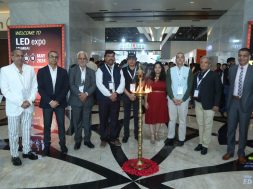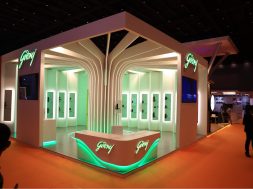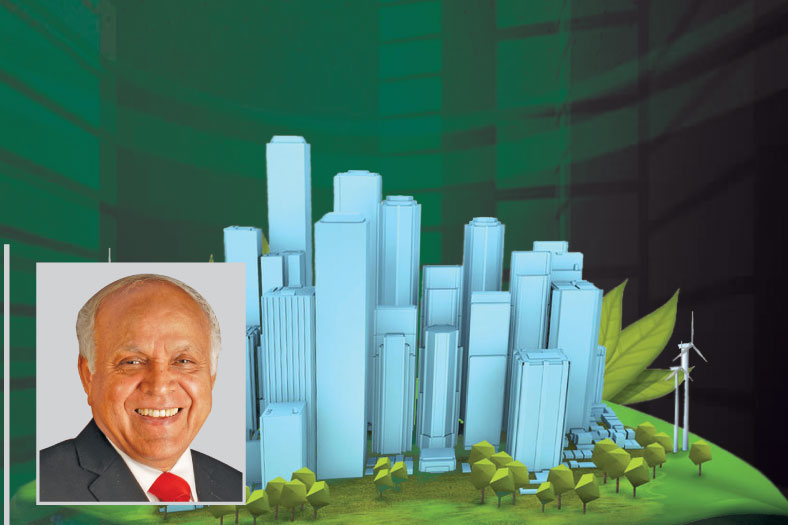Beyond art and architecture
“Perhaps architecture is beyond art and should be looked upon beyond functionality, form and aesthetics,” remarks Prof. Charanjit S. Shah, Founding Principal, Creative Group
Architecture needs to be relevant to the context, surroundings and environment. It should be a living experience, which is vibrant and transforming. In an exclusive interview with ACE Update, Ar. Charanjit S. Shah shares how a true architecture should reflect upon socio-economic, cultural, religious and intellectual aspects and help in creating a conducive environment.
What drew you to architecture, and how do you describe your journey?During my architecture education at the School of Planning and Architecture, New Delhi, expert faculties groomed me, and this inspired and transformed my thought process as well as inculcated the passion for architecture. Since then I started to follow the footsteps of great masters and dedicated myself to achieve excellence in this profession.
My understanding towards the various materials, adoption in innovation of construction details and critical structural analysis along with other elements of applied architecture has been instrumental in creating sustainable built forms.
There is a widespread belief that architecture is an art. How do you define this?Perhaps architecture is beyond art and should be looked upon beyond functionality, form and aesthetics. Architecture needs to be relevant to the context, surroundings and environment. It should be purposeful to the functionality and create an environment that is friendly and soothing. It should be a living experience, which is vibrant and transforming. True architecture should reflect upon socio-economic, cultural, religious and intellectual aspects, binding homogenising and helping in creating a conducive environment.
What role do green buildings play in today’s architecture?Green building concept in today’s context is as if putting old wine into a new bottle. Most of the ancient Indian cities have developed through the various sustainable features. The modern architecture with advancement of technology, construction techniques and preparation aspects have been looked upon in refining physical planning in terms of scale, layers, interface, connectivity and responsive to various other technical needs in terms of infrastructure and human comforts.
As an architect, creating sustainable green architecture could be achieved by passive strategies of green architecture, respecting the solar movement, mutual shading, wall-window ratios and insulation of the envelope of the building as well as using high-tech appropriate materials, which could insulate the envelope by maximizing the daylight and minimizing the heat gain. Today green buildings are being looked upon catering to innovations and techniques in terms of use of intelligent building management systems and automation and thus creating architecture.
Most cost-effective steps towards reduction in a building’s energy consumption usually occur during the design process. What should be the perfect design of a green building?In terms of energy-conscious building designs, most of the challenges are to be tackled during the design process. There are sufficient tools and techniques wherein energy and cost-effective challenges in respect of reducing of heat gain inside the building could be by adopting components respecting solar movement, mutual shading, wall-window ratios, insulation of the building envelope and using high tech appropriate materials.
A perfect green building can be achieved by respecting energy building code which will be helpful in creating green building if religiously adhered to with active use of active and passive design strategies.
Since the 1980s, passive solar building design and passive house have demonstrated heating energy consumption reductions of 70-90 per cent in many locations. Where does India stand in designing passive solar buildings?We need to be very conscious and shift our focus from fossil to solar energy as solar energy can provide for 10,000 times of our power requirements. Most of India is rich in getting solar heat which could definitely be converted into energy, and the same is adopted and experimented in most parts of our country. Besides having the initial teething and practical problems, we could probably say that we are now comfortable and fully equipped with technology wherein this would be used from micro to macro levels in various building designs.
There are many more innovations wherein through various roof coverage of functional areas, atriums, car parks, stadiums and service corridors substituting the roof cover by solar panels is a by-product besides the functionality. I have also attempted to use the solar panels in the car park areas for various mass-transit projects like Chennai Airport and Raipur Airport for giving shade and also producing energy by use of solar voltaic panels. Similarly, they have been used again as a cover for the metro wire duct for Akshardham station. Solar park forms have also been created on the non-productive lands as an alternative way of producing energy.
What are the challenges to build a green building, and how can we overcome them?Any green building architect should identify places with intrinsic suitability for agriculture, forestry, recreation and urbanisation. Designing with nature at a building level is about recognising sun paths, breezes, shade trees and rock formations that can be used to create something that people can inhabit comfortably, while recognising that natural features such as trees, animal tracks, habitats and natural drainage systems must be ‘protected’.
By limiting itself to sustainability that is dependent on technology for solutions, sustainable architecture in India fails to incorporate the critical dimension of social and cultural sustainability without which it may not work in the Indian context.
My personal view is that the sustainable architecture cannot be restricted to quantitative environmental sustainability. It is essential that relationship among social, economic and environmental sustainability should become a critical consideration for the design of India’s built environment. How is Creative Group playing its role in developing green buildings? Name some of your green buildings and share their green features?Creative Group believes that the key to architectural sustainability is to work with, rather than against, nature to sensitively exploit and simultaneously avoid damaging natural systems. Architectural sustainability mirrors the view that it is necessary to position human activities as a non-damaging part of the ongoing ecological landscape, with a belief that ‘nature knows best’.
One of our green structures is Chennai Airport, one of the Asia’s largest green terminals. The terminal buildings have elegant 300-m twin wing-like hovering roofs on both sides, which provide complete shade to the south facing elevation and protect the departing passengers from scorching heat.
Another green project is Times Square Mall in Naya Raipur. The shopping mall is a design project for an entire micro-urbanism. Times Square Mall is a step towards responsive architecture and design for the next generation, catering to all aspects of sustainable, affordable design with economic viability and commercial feasibility.
26
Cookie Consent
We use cookies to personalize your experience. By continuing to visit this website you agree to our Terms & Conditions, Privacy Policy and Cookie Policy.







